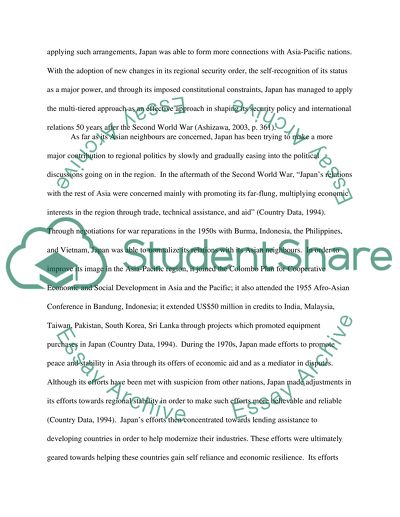Cite this document
(Japan's Role in the Asia-Pacific Region Essay Example | Topics and Well Written Essays - 1500 words, n.d.)
Japan's Role in the Asia-Pacific Region Essay Example | Topics and Well Written Essays - 1500 words. https://studentshare.org/politics/1563648-in-what-ways-has-japan-succeeded-in-shaping-international-politics-in-the-asia-pacific-without-reviving-memories-of-its-past-aggression
Japan's Role in the Asia-Pacific Region Essay Example | Topics and Well Written Essays - 1500 words. https://studentshare.org/politics/1563648-in-what-ways-has-japan-succeeded-in-shaping-international-politics-in-the-asia-pacific-without-reviving-memories-of-its-past-aggression
(Japan'S Role in the Asia-Pacific Region Essay Example | Topics and Well Written Essays - 1500 Words)
Japan'S Role in the Asia-Pacific Region Essay Example | Topics and Well Written Essays - 1500 Words. https://studentshare.org/politics/1563648-in-what-ways-has-japan-succeeded-in-shaping-international-politics-in-the-asia-pacific-without-reviving-memories-of-its-past-aggression.
Japan'S Role in the Asia-Pacific Region Essay Example | Topics and Well Written Essays - 1500 Words. https://studentshare.org/politics/1563648-in-what-ways-has-japan-succeeded-in-shaping-international-politics-in-the-asia-pacific-without-reviving-memories-of-its-past-aggression.
“Japan'S Role in the Asia-Pacific Region Essay Example | Topics and Well Written Essays - 1500 Words”. https://studentshare.org/politics/1563648-in-what-ways-has-japan-succeeded-in-shaping-international-politics-in-the-asia-pacific-without-reviving-memories-of-its-past-aggression.


